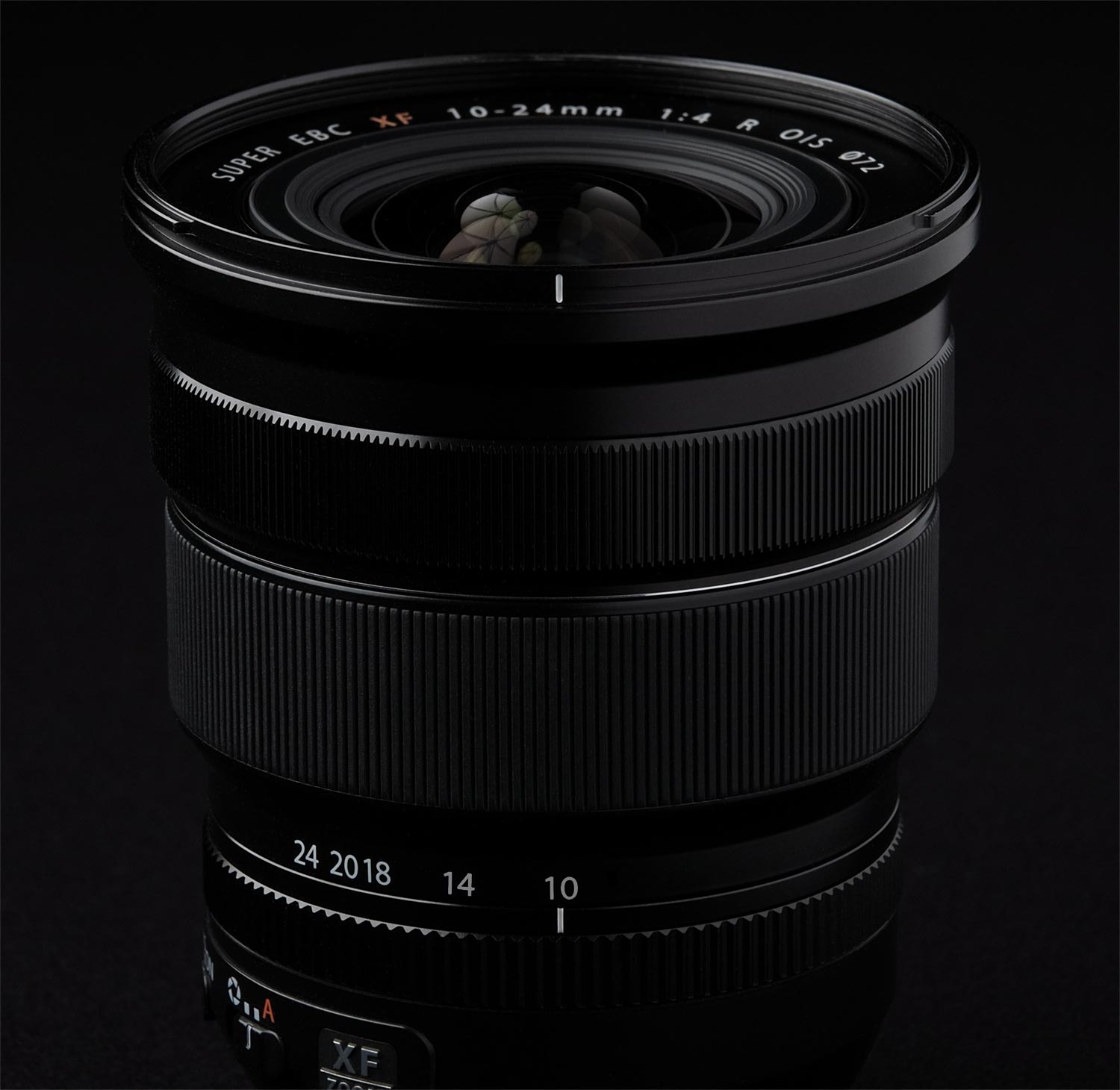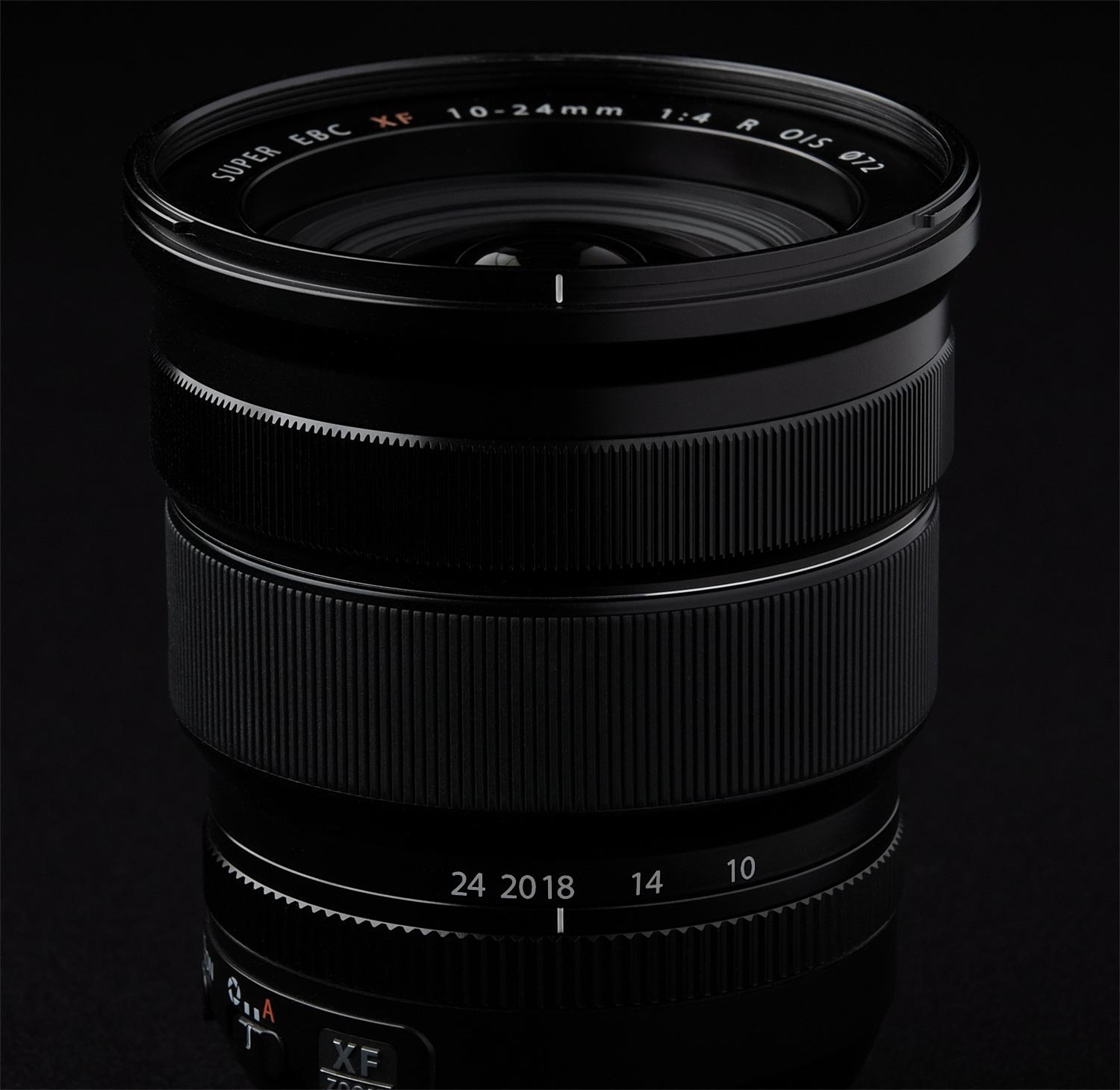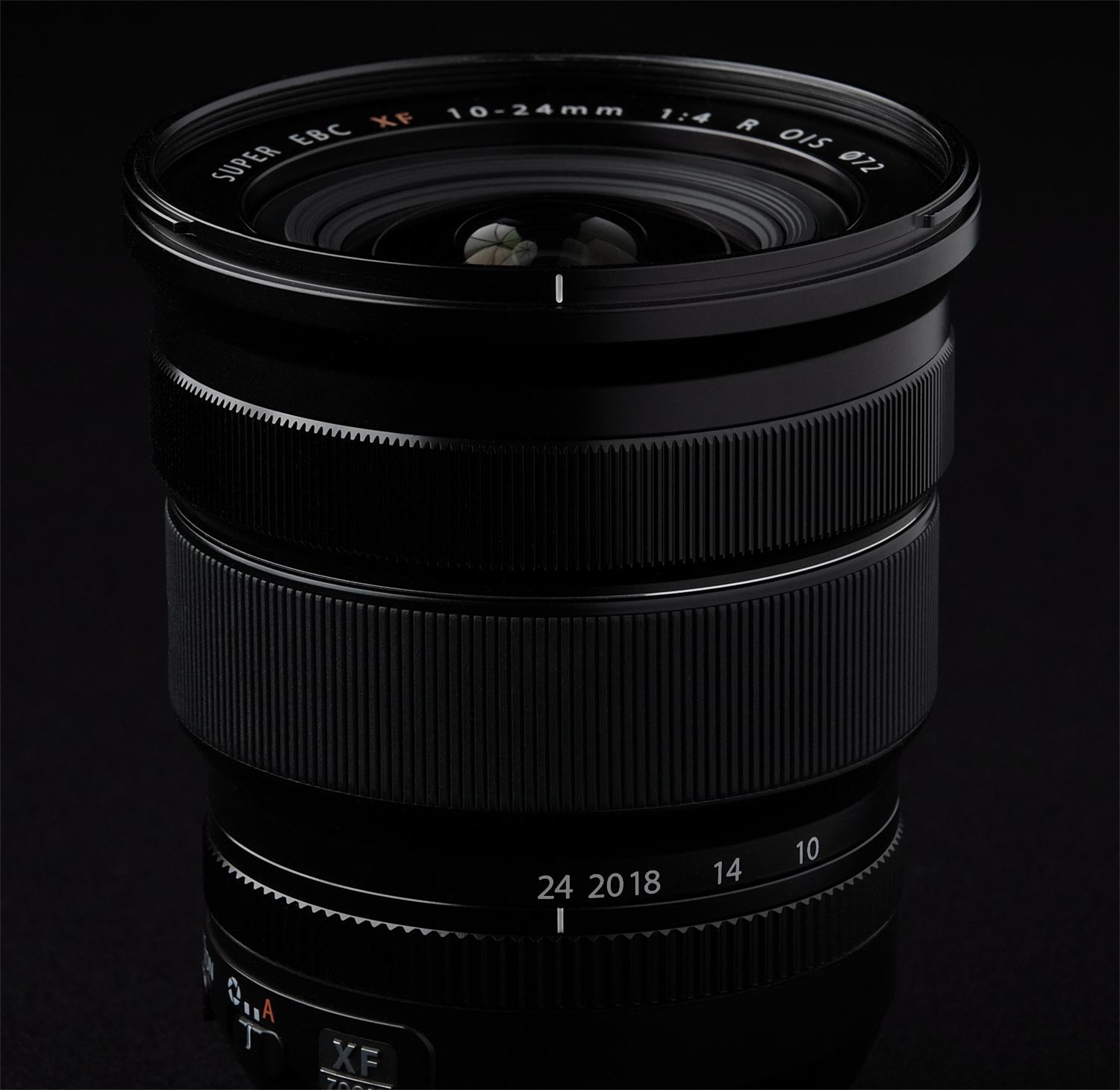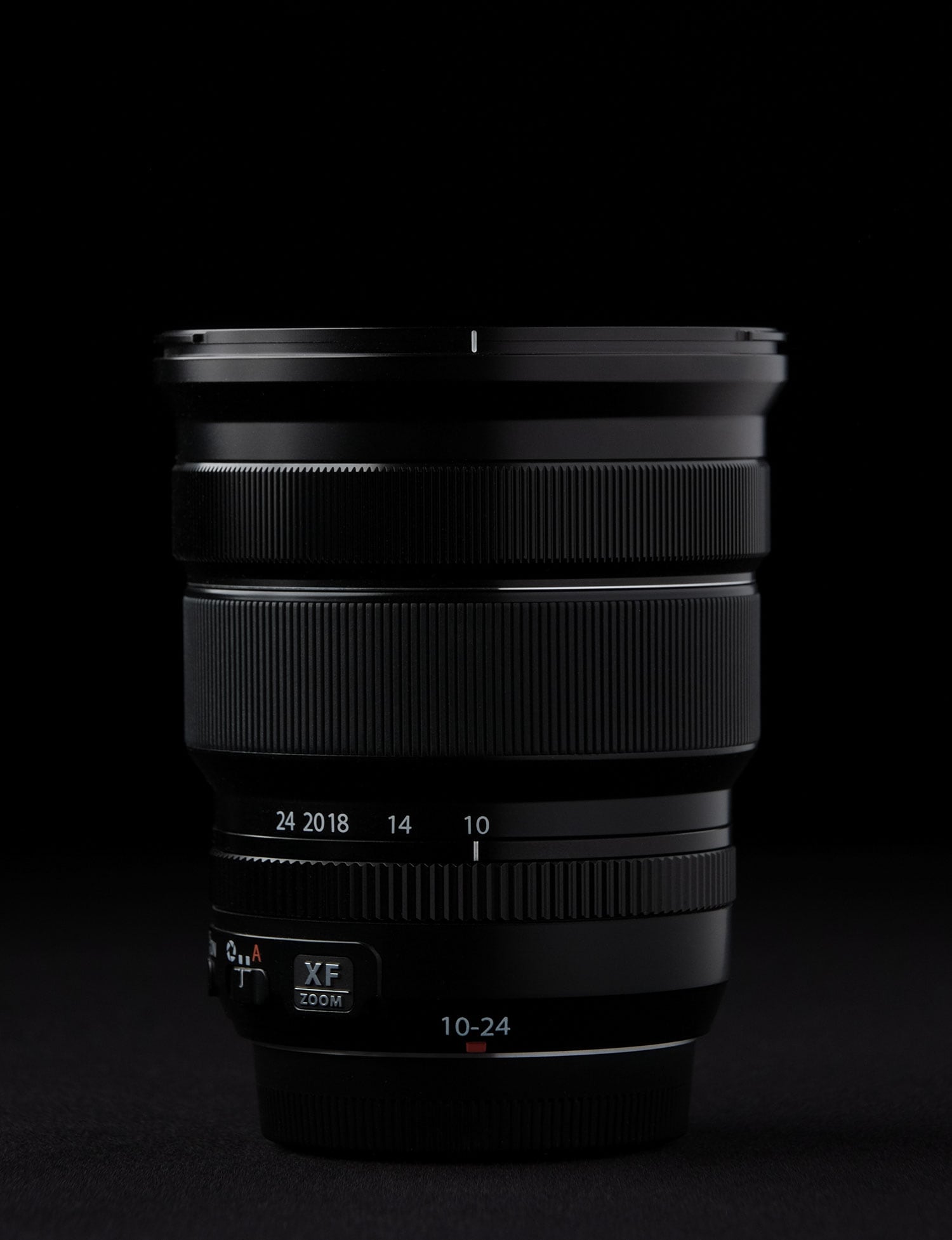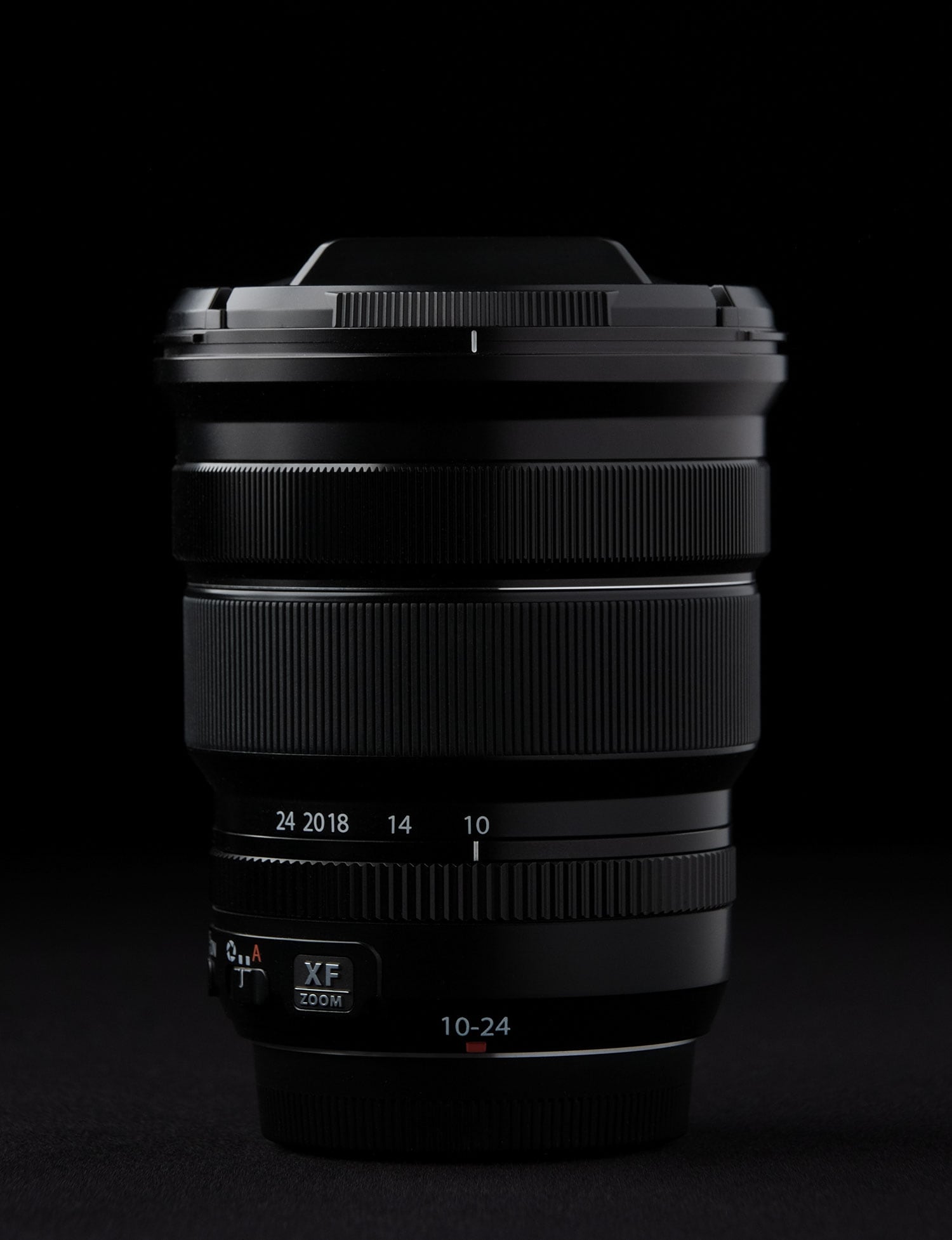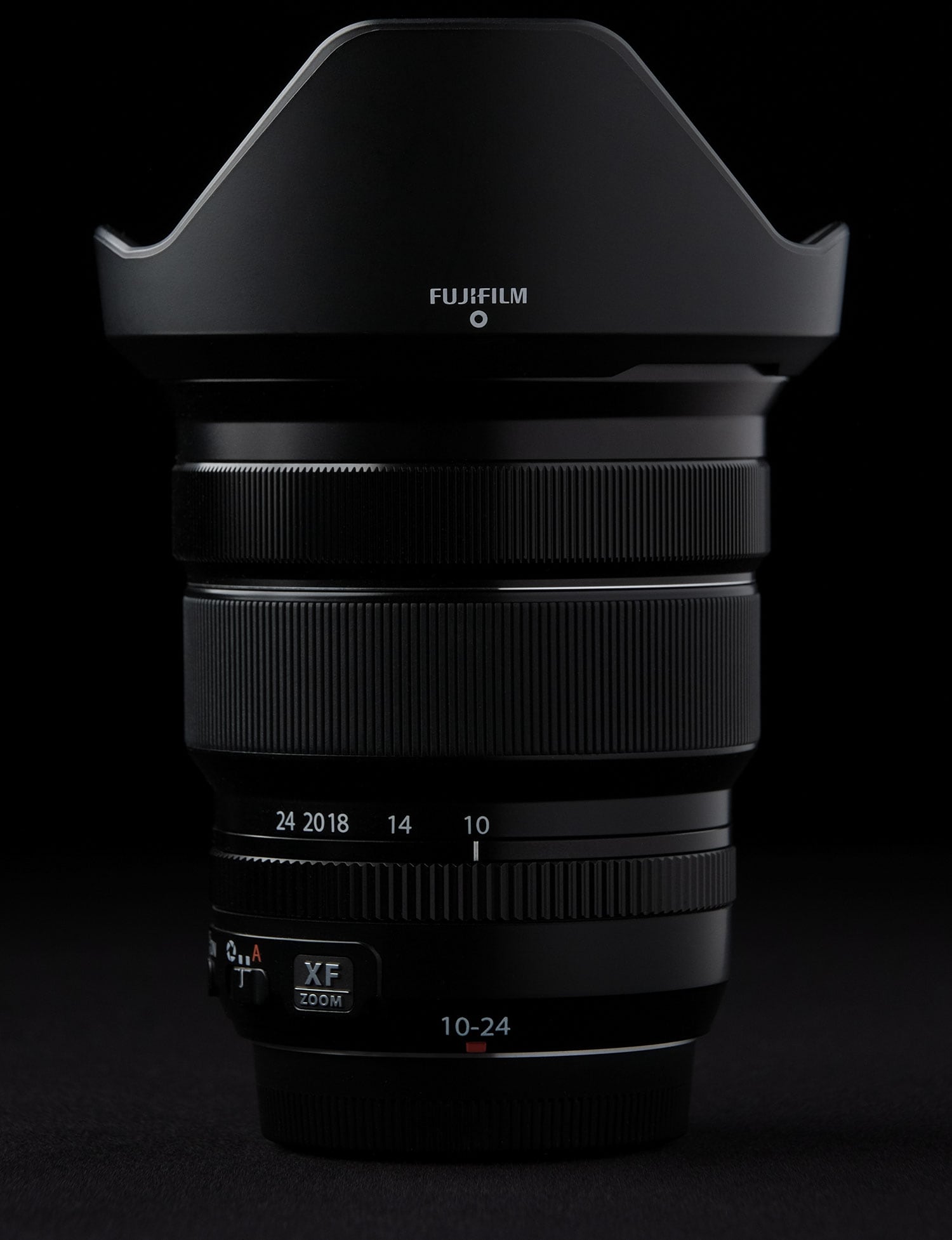Fuji vs. Fuji’s FUJINON XF 10-24mm F4 OIS Review
February, 2014: Originally published
March, 2018: Major update
June, 2020: Minor updates
Introduction
Way back before the XF 10-24mm F4 OIS was announced, the wide to ultra-wide focal range was what I was most concerned about missing when I switched from Nikon to Fuji. The XF 14mm F2.8 (Review) more than satisfied my needs at 21mm, but at the time, I was really into going wider.
I had the opportunity to briefly test out the XF 10-24mm F4 OIS. You can still see my pre-production impressions here, but as a review, they were rather hopelessly out of date.
The XF 10-24mm F4 OIS was a hotly anticipated lens for me, though my excitement was tempered before the official release by the lens’s lack of weather sealing. It held up in the cold just fine, but water and dust are another matter.
In the years since, I’ve made reasonably good use of the XF 10-24mm F4 OIS, and put it through its paces against a bunch of lenses in its range. Here’s my review.
Specifications | |
| Lens Construction | 14 elements in 10 groups (4 aspherical elements, 3 extra low dispersion elements) |
|---|---|
| Focal Length (35mm format equivalent) | 10-24mm (15-36mm) |
| Maximum Aperture/Range | f/4 ⅓ stop increments |
| Aperture Type | 7 blades (rounded diaphragm opening) |
| Focus Range | Approximately 24cm - ∞ (infinity) |
| Maximum Magnification | 0.16× |
| External Dimensions | 78mm diameter x 87mm long |
| Weight | 405g 456g w caps and hood |
| Filter Size | ø72mm |
Features | |
| Weather Sealing | No |
| Optical Image Stabilization (OIS) | Yes (2.5 stop claimed) |
| Focus Motor | Stepping |
| Push/Pull Clutch Manual Focus Ring | No |
| Nano GI Coating | No |
| Fluorine Coating | No |
Handling
Build Quality
If you’ve handled the XF 18-55mm F2.8-4 OIS (Review), you will be right at home with the XF 10-24mm F4 OIS. The inner-most ring which controls the aperture has the exact same feel, while the zoom ring is a little stiffer. Whether or not this is better will come down to preference.
The zoom ring has a similar amount of mild roughness to it. It’s very faint, but noticeable relative to the focus ring and should be considered normal. This was Fuji’s first rubberized zoom ring. In room temperature, I prefer the metal zoom ring. I find my grip is more sure with the metal knurled rings and I just love the feel of them. They ooze quality.
The lens barrel has markings for 10, 14, 18, 20, and 24mm in very short rotation. So short the 20 and 18 markings could be mistaken for a poorly kerned year. This makes zooming from one end of the range to the other quick, but it can make dialing in a specific focal length challenging. The front element moves in and out slightly when zooming.
Finally, the focus ring also feels just like the split focus ring on the kit lens. Nice and smooth.
Aperture Ring
That the aperture ring on the XF 10-24mm F4 OIS is the same as the kit lens is a bit of mystery to me. See, the XF 18-55mm F2.8-4 OIS has a variable aperture, which makes an engraved aperture ring impossible. The XF 10-24mm F4 OIS, on the other hand, is a fixed f/4 aperture, and really should have the same sort of aperture ring as the XF 16-55mm F2.8 WR. This makes quick confirmation of one’s aperture a little more effort on bodies without a Sub Monitor.
Also like the kit lens, the XF 10-24mm F4 OIS includes an A Switch to access Shutter Speed priority, and have the camera choose the aperture for you, or set the Shutter Speed to A as well for Program Auto mode.
Autofocus
The XF 10-24mm F4 OIS lacks the linear motors of larger lenses, but still manages reasonably snappy autofocus with its Stepping Motor,1 and by only moving the smaller rear elements of the lens during focus. The elements on wider lenses also typically have much less distance to travel to get focused.
Optical Image Stabilization (OIS)
The XF 10-24mm F4 OIS ekes out a mere 2.5-3 stops of image stabilization (depending which Fujifilm documentation you read)—the least of any OIS lens—on camera bodies before the X-H1 and its 2.00 firmware update. Getting sharp images handheld tends to get easier the wider the focal length, so shutter speeds down to ⅛ of a second are possible.
Do keep in mind that maximum sharpness is achieved with OIS off so all you tripod shooters will want to shoot unstabilized as far as the lens goes.
Size and Weight
While the XF 10-24mm F4 OIS is considerably smaller than a DSLR equivalent, it’s still quite a bit larger than the primes covered by the focal range. The only lens that could leave question is the XF 16mm F1.4 WR (Review), Fuji’s heftiest wide angle prime. Back to the zoom, it balances very well on Fuji’s larger cameras like the X-Pro, X-T, and X-H, but can get a little front heavy on smaller bodies like the X-E and X-Txx bodies.
Hood
A now standard2 plastic hood ships with the XF 10-24mm F4 OIS. It’s not terribly long, but it does add considerable width to the lens, which can make it difficult to fit in bags, even with the hood reversed. Since I am often interested in using filters with this lens, I rarely bother with the hood.
Lens Cap
I swapped the cap that shipped with my XF 10-24mm F4 OIS for a Nikon LC-72→. I’d buy Fuji’s superior 72mm cap that ships with the XF 50-140mm F2.8 WR, but it doesn’t seems to be available as an aftermarket purchase.
Optical Viewfinder
Sadly, you can pretty much forget it. Wider than 18mm leaves part of your composition outside the frame, and even when it’s not, the lens is so large it obstruct for too much of the viewfinder to be usable.
Image Quality
Sharpness
The XF 10-24mm F4 OIS performs admirably in the sharpness department. While this isn’t a Versus piece, it’s tough not to draw some comparison with prime alternatives in the range. The summery is the zoom performs almost as well as the primes at the wider end, as good or better at 18mm, and quite a bit worse at the narrow end of the range.
For those interested in much more in depth comparison and analysis between this zoom and primes in its range, check out my XF 10-24mm F4 OIS vs. Primes piece. Most primes are included with the exception of the XF 16mm F1.4 WR—for which you can find a review here, and an in depth comparison with two of the other primes compared in the article above, here—and the XF 16mm F2.8 WR.
Bokeh
You’re likely not buying this lens for the bokeh, and at f/4 expectations ought to be managed, but some decent bokeh can’t be rendered when focusing closely enough with the lens wide open. Keep in mind this is the softest focal length shot at the softest aperture, so the worst of the worst the lens is capable of in terms of sharpness.
In short, if bokeh’s your game, this lens isn’t.
Distortion
Heavy barrel on the wide end, switching to not quite as heavy pincushion zoomed in when shooting RAFs. The transition seems to be somewhere between 14 and 18mm. 14mm is about the point of least distortion and it is quite minimal.
When correction profiles are applied, distortion can almost safely be ignored. I’ve used this lens successfully for real estate and architecture photography, and I know of at least one person who actually became a real estate agent after using this lens to capture real estate photos. You can perhaps do a little better using primes, but switching lenses in these situations can quickly grow tiresome.
Vignetting
Heavy at maximum width, moderate to light at all other focal lengths, and never entirely goes away. Stopping down couple times will net you the most consistently exposed frame.
Flare
For such a wide angle, flare and ghosting is remarkably well controlled. Flare and ghosting is possible, but is typically not a nuisance. Typically. There’s a good example of some nuisance flare in the samples below.
Aberrations
Like distortion, if your editing software reads correction profiles, aberrations may never be of any concern. Likewise for JPEG shooters. It does exist in small amounts particularly towards the edges of the frame at wider apertures.
Conclusion and Rating
The XF 10-24mm F4 OIS is an excellent lens, but because of the lack of weather sealing, it’s a lens that gets left behind far more often than I’d like. My wide angle enthusiasm shifted heavily towards the XF 8-16mm F2.8 WR because of this. The XF 8-16mm F2.8 WR comes with its own set of trade-offs in that it’s humongous and can’t accept filters. Still, I would advise my readers look into the XF 8-16mm F2.8 WR—a lens I hope to have more content for online in the future.
For those who weather sealing is unimportant, I can recommend it strongly with the proviso that 24mm may not meet the needs of the fussy. I’m happy to grab a happy snap on vacation, but if I were closing in on 23mm with my camera mounted on a tripod for a landscape shot, I would want to change my lens if possible.
Recommended for good weather.
If you’d like to purchase the XF 10-24mm F4 OIS, or anything else for that matter please consider using one of the affiliate links below. The price is the same for you, but a small percentage of the purchase price goes to me, which helps keep this site going. Thank you.




